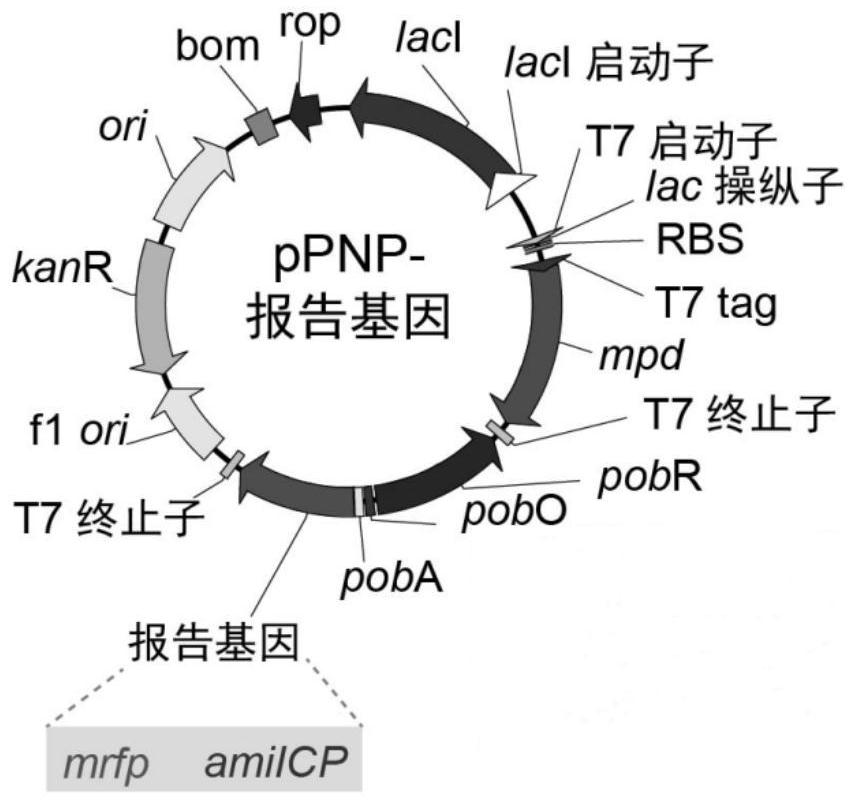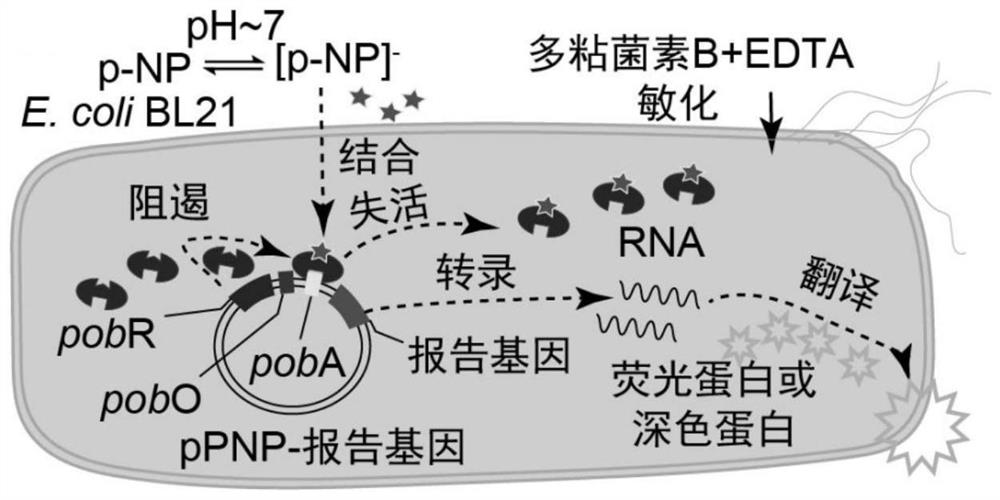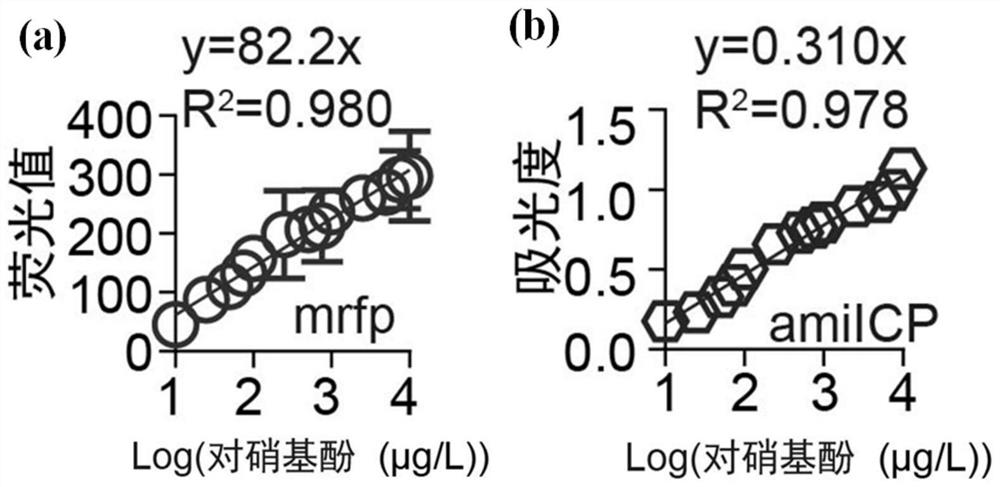Whole-cell biosensor for detecting p-nitrophenol and detection method
A biosensor, p-nitrophenol technology, applied in the direction of microorganism-based methods, biochemical equipment and methods, botany equipment and methods, etc., can solve the problem that the detection method cannot meet the requirements of rapid, high-throughput and accurate detection of nitrophenol and other issues to achieve the effect of high-throughput detection
- Summary
- Abstract
- Description
- Claims
- Application Information
AI Technical Summary
Problems solved by technology
Method used
Image
Examples
preparation example Construction
[0068] The embodiment of the present invention also provides a preparation method of a whole-cell biosensor for detecting p-nitrophenol as described above in the embodiment of the present invention, wherein the method includes the steps:
[0069] S11, using primer polymerase chain reaction, clone the gene sequence of pPNP gene fragment from pET22b-YFP plasmid (its nucleotide sequence is shown as SEQ ID NO: 3), from pMV_pobRO plasmid (its nucleotide sequence is shown as SEQ ID NO: 3) NO: 4) clone the gene sequence of pobRO-m reporter gene fragment, clone the gene sequence of mrfp reporter gene fragment from pUC19_mrfp plasmid (its nucleotide sequence is shown as SEQ ID NO: 5);
[0070] S12, using the mixture of the obtained pobRO-m reporter gene fragment and the amplified product of the mrfp reporter gene fragment as a template, using primer polymerase chain reaction to obtain the pobRO-m-mrfp gene;
[0071] S13, connecting the pobRO-m-mrfp gene to the pClone007 backbone to obt...
Embodiment 1
[0144] Preparation of whole-cell biosensor E.coli BL21 / pPNP-mrfp:
[0145] (1) The gene sequence of the pPNP gene fragment (4677bp) of the backbone structure of the pET22b plasmid was cloned from the pET22b-YFP plasmid by using primer polymerase chain reaction (PCR), and the annealing temperature was 53°C;
[0146] Primers used to amplify the pPNP gene fragment:
[0147] Forward primer sequence (pPNPF): GAGATCCGGGCTGCTAACAAAGC;
[0148] Reverse primer sequence (pPNPR): GGATCCGCGACCCATTTGC;
[0149] (2) using primer polymerase chain reaction (PCR), clone the gene sequence of pobRO-m reporter gene fragment (842bp) from pMV_pobRO plasmid, and the annealing temperature is 60 ℃;
[0150] Primers used to amplify the pobRO-m reporter gene fragment:
[0151] Forward primer sequence (pobR-mF): TTATACCAGATTGCGCAGTTTCGTTG;
[0152] Reverse primer sequence (pobR-mR): AAACCATTTTGGATTTGAATGTTATGATGGAACAACA
[0153] CCATCAGTATTTGG;
[0154] (3) using primer polymerase chain reaction (P...
Embodiment 2
[0177] Preparation of whole-cell biosensor E.coli BL21 / pPNP-amilCP:
[0178] (1) The gene sequence of the pPNP gene fragment (4677bp) was cloned from the pET22b-YFP plasmid by using primer polymerase chain reaction, and the annealing temperature was 53°C;
[0179]Primers used to amplify the pPNP gene fragment:
[0180] Forward primer sequence (pPNPF): GAGATCCGGGCTGCTAACAAAGC;
[0181] Reverse primer sequence (pPNPR): GGATCCGCGACCCATTTGC;
[0182] (2) using primer polymerase chain reaction, clone the gene sequence of pobRO-a reporter gene fragment (949bp) from pMV_pobRO plasmid, annealing temperature is 55 ℃;
[0183] Primers used to amplify the pobRO-a reporter gene fragment:
[0184] Forward primer sequence (pobR-aF): TTATACCAGATTGCGCAGTTTCGTTG;
[0185] Reverse primer sequence (pobR-aR): ATGTATATCTCCTTGCTATTTTCTATTTT;
[0186] (3) using primer polymerase chain reaction, clone the gene sequence of amilCP reporter gene fragment (698bp) from pUC19_amilCP plasmid, annealing...
PUM
 Login to View More
Login to View More Abstract
Description
Claims
Application Information
 Login to View More
Login to View More - R&D
- Intellectual Property
- Life Sciences
- Materials
- Tech Scout
- Unparalleled Data Quality
- Higher Quality Content
- 60% Fewer Hallucinations
Browse by: Latest US Patents, China's latest patents, Technical Efficacy Thesaurus, Application Domain, Technology Topic, Popular Technical Reports.
© 2025 PatSnap. All rights reserved.Legal|Privacy policy|Modern Slavery Act Transparency Statement|Sitemap|About US| Contact US: help@patsnap.com



